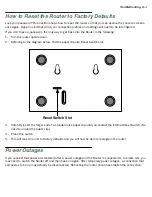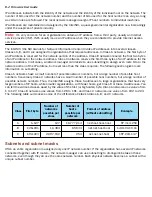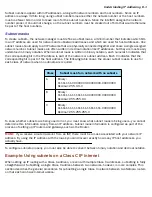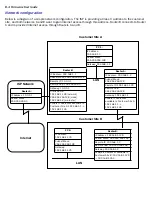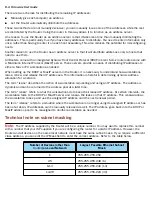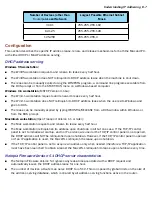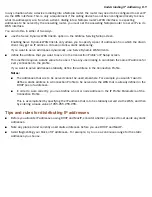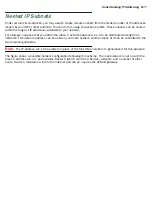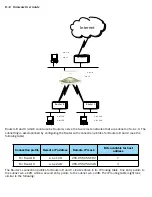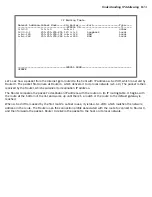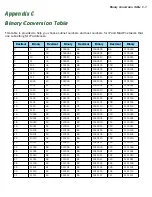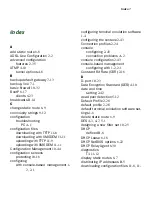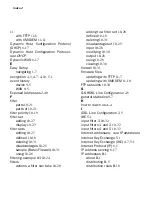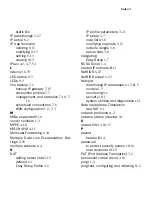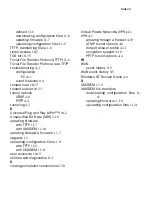
Understanding IP Addressing B-13
Let’s see how a packet from the Internet gets routed to the host with IP address a.b.c.249, which is ser ved by
Router C. The packet first arrives at Router A, which delivers it to its local network (a.b.c.0). The packet is then
received by the Router, which examines its destination IP address.
The Router compares the packet’s destination IP address with the routes in its IP routing table. It begins with
the route at the bottom of the list and works up until there’s a match or the route to the default gateway is
reached.
When a.b.c.249 is masked by the first route’s subnet mask, it yields a.b.c.248, which matches the network
address in the route. The Router uses the connection profile associated with the route to connect to Router C,
and then for wards the packet. Router C delivers the packet to the host on its local network.
IP Routing Table
Network Address-Subnet Mask-----via Router------Port------------------Type----
----------------------------------SCROLL UP-----------------------------------
0.0.0.0 0.0.0.0 a.b.c.1 -- Other
127.0.0.1 255.255.255.255 127.0.0.1 Loopback Local
a.b.c.128 255.255.255.192 a.b.c.128 WAN Local
a.b.c.248 255.255.255.248 a.b.c.248 WAN Local
---------------------------------SCROLL DOWN----------------------------------
UPDATE
Summary of Contents for 4000 Series
Page 10: ...x Firmware User Guide Packet header types B 14 Appendix C Binary Conversion Table C 1 Index ...
Page 18: ...1 8 Firmware User Guide ...
Page 66: ...2 48 Firmware User Guide ...
Page 102: ...3 36 Firmware User Guide ...
Page 130: ...4 28 Firmware User Guide ...
Page 206: ...7 18 Firmware User Guide ...
Page 224: ...9 14 Firmware User Guide ...
Page 274: ...10 50 Firmware User Guide ...
Page 314: ...Index 6 ...

